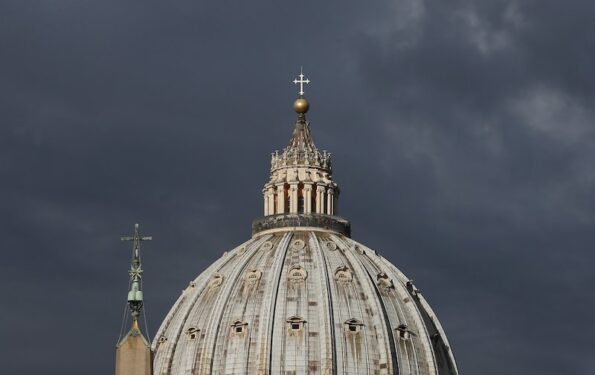
By Carol Glatz
VATICAN CITY (CNS) — The Vatican reported that projections of an expected deficit of 33.4 million euros ($34 million) for 2021 ended in a shortfall of just 3.3 million euros ($3.36 million).
“We are not looking for surpluses but for sustainability of the Holy See’s service,” Jesuit Father Juan Antonio Guerrero Alves, prefect of the Secretariat for the Economy, told Vatican News Aug. 5.
“A deficit of 3 million euros in a budget of 1.1 billion ($1.12 billion) is not a lot; it is practically balanced, and it does not seem like a figure to cause concern. But if we do a more detailed analysis, there are some areas for improvement ahead,” he said the day before the publication of the Holy See’s consolidated financial statement for 2021.
For the second year in a row, the Administration of the Patrimony of the Holy See, known by its Italian initials APSA, published a summary of its budget and financial assets.
The smaller deficit and an 8.11 million-euro ($8.27 million) surplus in the operational budget was due in part to reduced expenditures and an increase in the amount of money APSA contributed to cover the expenses of the Roman Curia — an extra 4.6 million euros ($4.69 million) compared to 2020. Father Guerrero said the Holy See reduces its assets every year by an average of 20-25 million euros ($20.4 to $25.5 million) to help fund the Curia.
“Return on assets and internal contributions do not cover mission expenses. That is why the help of Peter’s Pence, which finances the pope’s charitable works and mission, as well as the contribution of the dioceses, is essential,” he said.
The Curia, he said, “continues to show insufficient coverage, which I would define as an ecclesial problem. The pope’s mission is underfunded.”
“We cannot act only on expenses by reducing them; there will come a time when they cannot be decreased further without compromising the mission, so we are also working on ways to increase revenues. The fact is that the Holy See sells assets every year to cover curial services,” Father Guerrero said.
With recent reforms by Pope Francis, APSA, which administers Vatican properties and investments in order to help fund the work of the Roman Curia, now also manages the real estate, treasury and accounts that had been owned by the Vatican Secretariat of State. The include papal funds and entities representing the Holy See — including the administration of Peter’s Pence. APSA also functions as a central purchasing office for the Vatican in an effort to reduce the Curia’s expenses.
Therefore, previous financial statements considered only the finances of the Roman Curia, which was “only 35% of the total,” Father Guerrero told Vatican News. Now the annual statement has gone from covering “60 entities in the previous fiscal year to 92 in the current period,” as it includes foundations, hospitals and other holdings, he said.
Even though the office governing Vatican City State and the Vatican Bank are not included, the latest consolidation of financial statements still represents “a step forward in terms of transparency and visibility of the overall economic situation of the Holy See,” he said.
Bishop Nunzio Galantino, president of the Administration of the Patrimony of the Apostolic See, told Vatican News Aug. 6 that the credibility and the reputation of the church “also require competent and transparent management of the patrimony.”
“Making the financial statement public is a concrete way to thank those who, in different ways, still generously entrust resources to the church for her mission,” he said.

